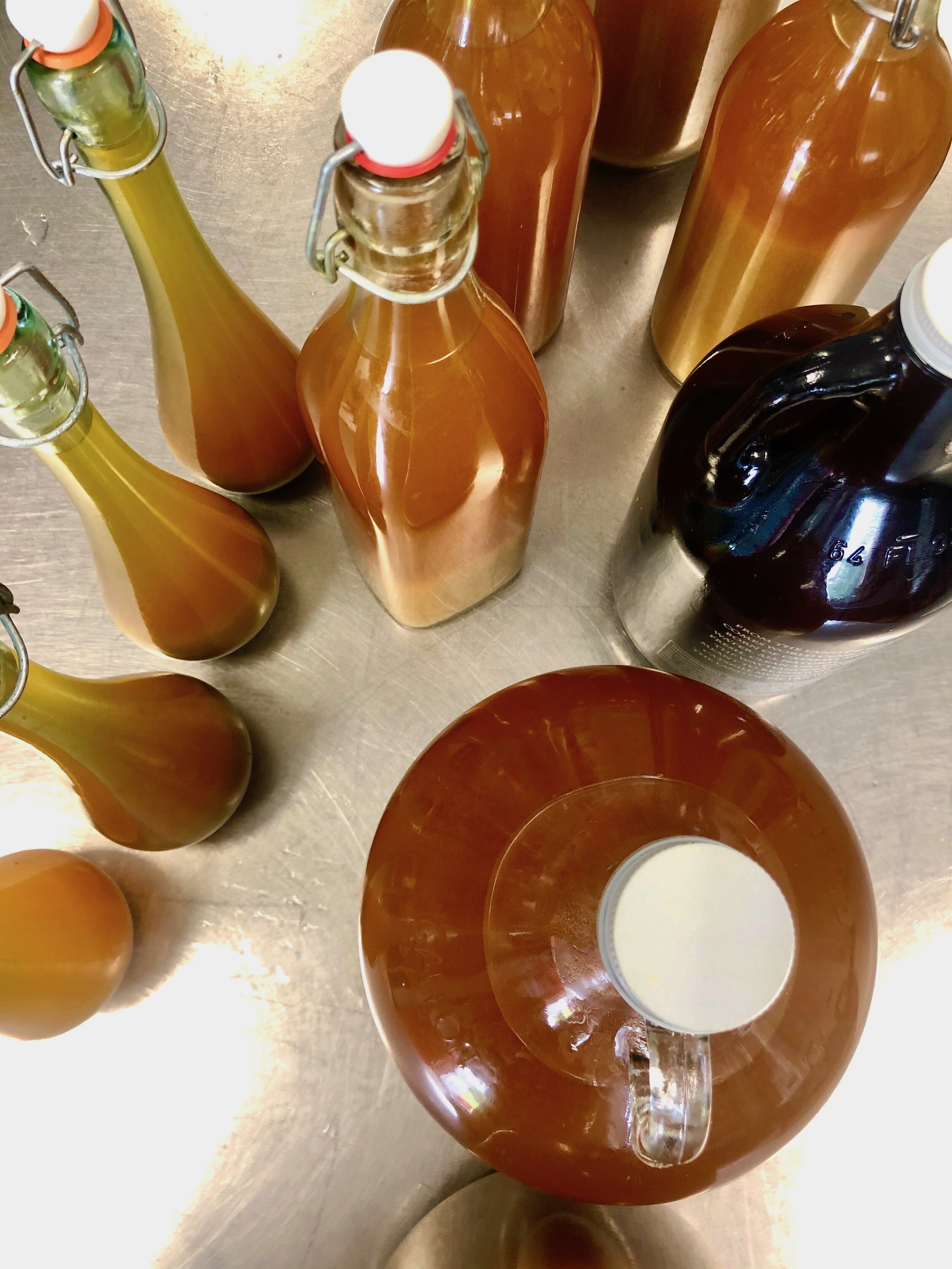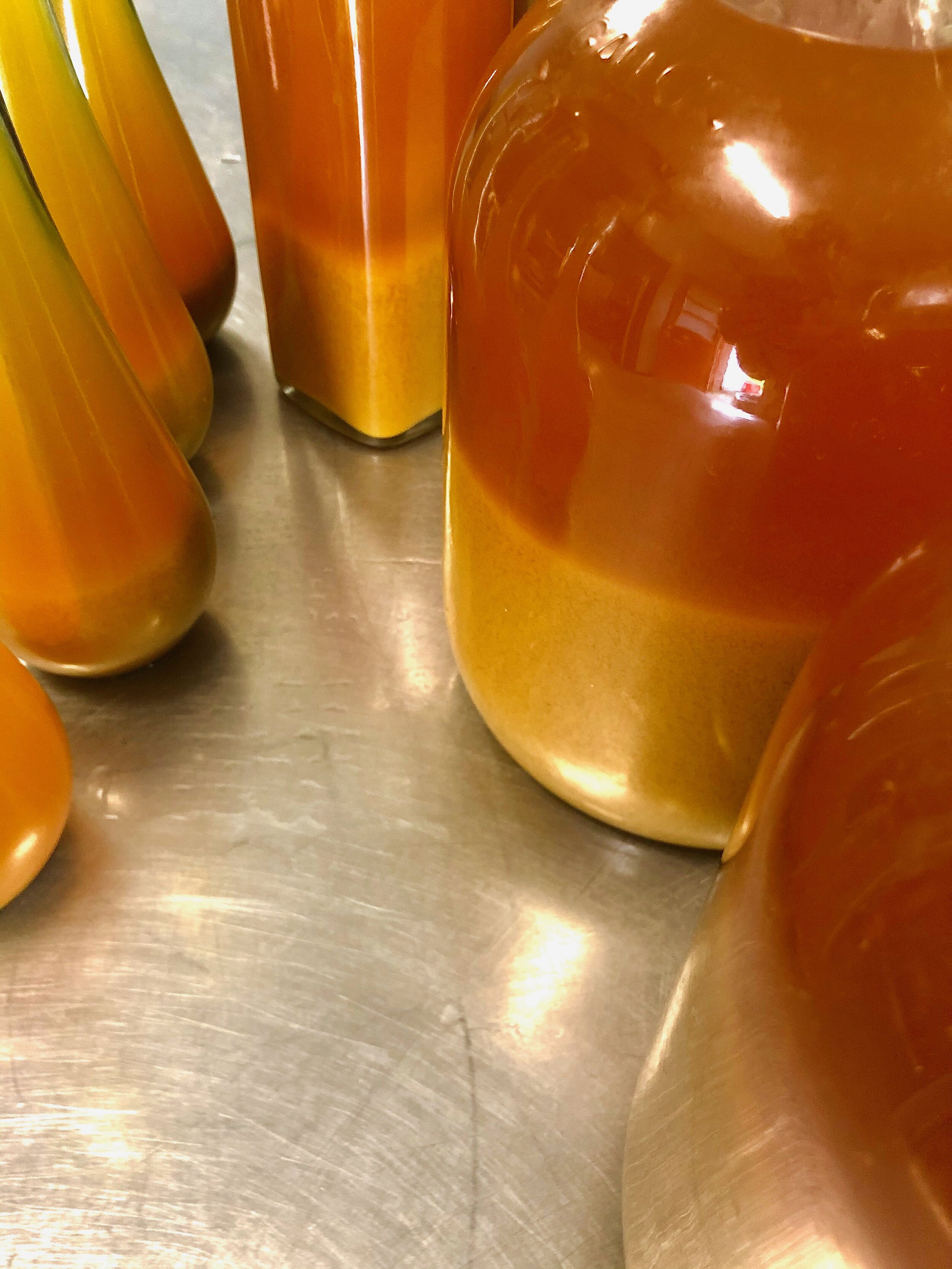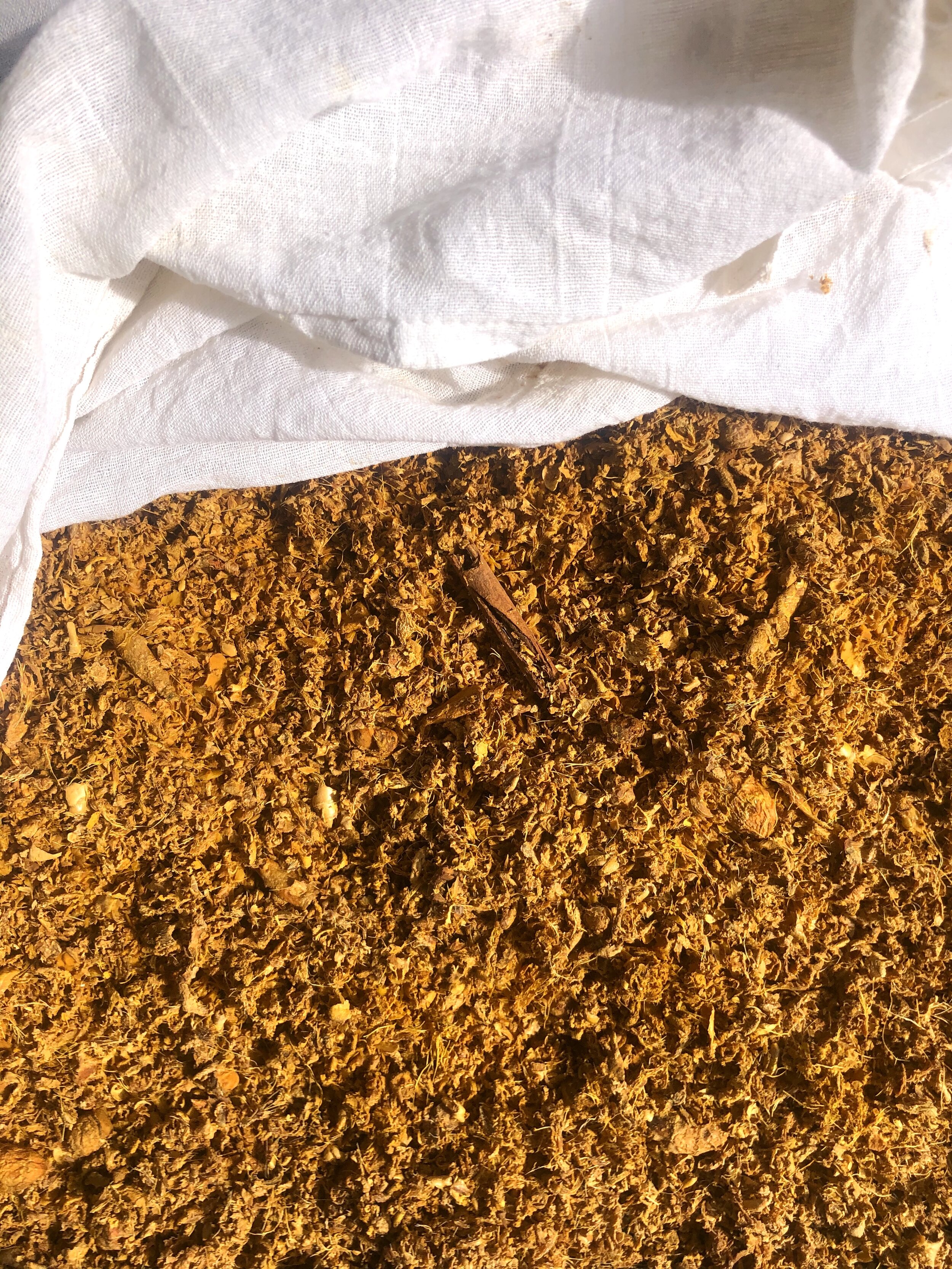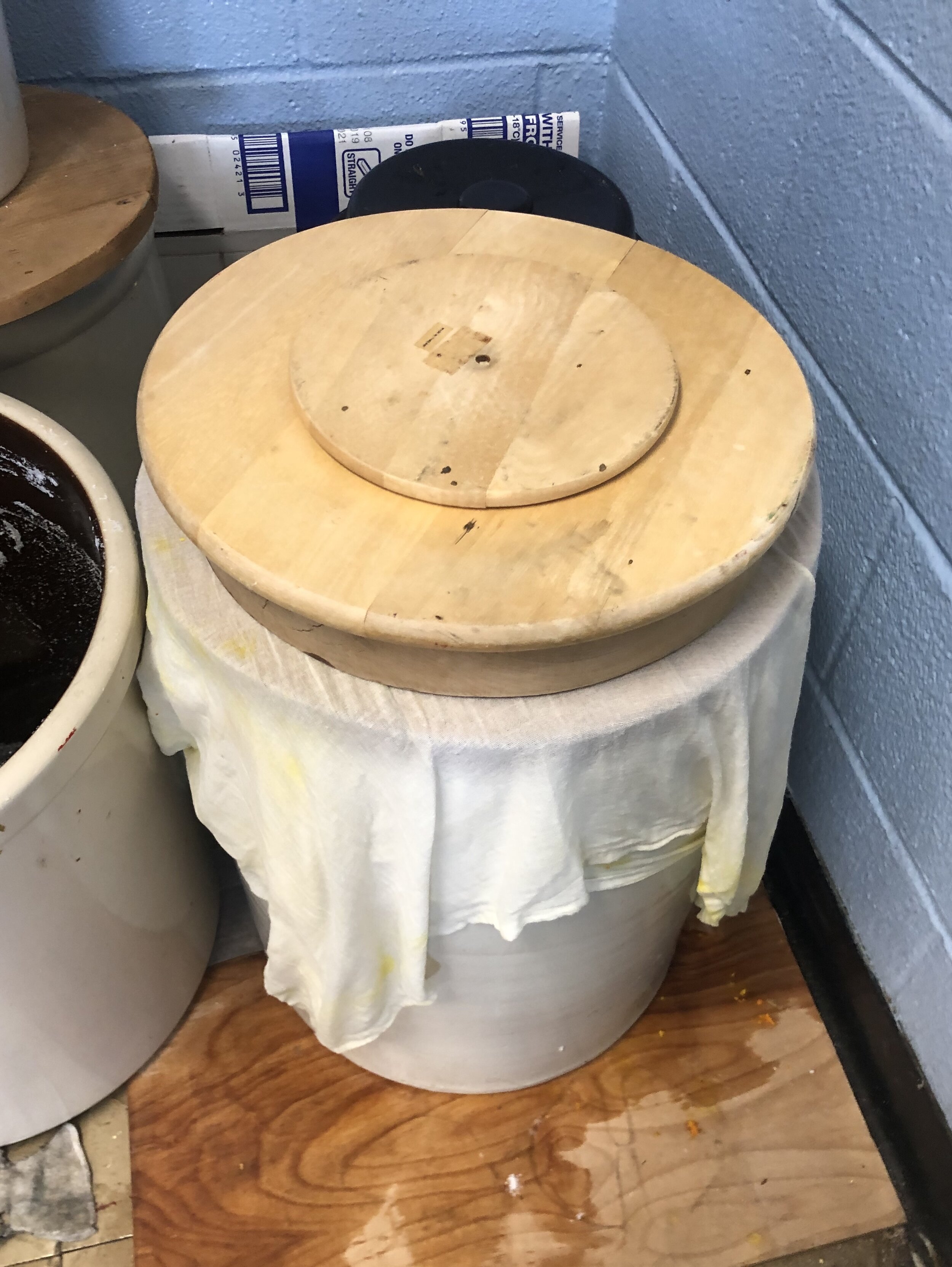In early September I arrived in Catskill NY to spend a month with Carrie and Suresh and help out in their production kitchen, develop recipes and learn the ways of fermentation.
One of the products I helped make with Suresh, and Kyle—their helper who lives down the road—was the Turmeric Ginger Pickle. Although it has a short ingredient list consisting of fresh organic turmeric and ginger roots, lemon juice and salt, it requires one time and labor intensive step: peeling the turmeric, which helps enhance the flavor and color of the product, and keep it free of unwanted bacteria from the soil. With a patient mindset and small knife in hand, we began working our way through 50 pounds of turmeric. The technique was to scrape the skin in a quick motion with the knife perpendicular to the turmeric, in order to preserve as much of the flesh as possible. Suresh took a bite of one of the peeled pieces and encouraged me to try, it felt strange to eat turmeric like a carrot, but I was pleasantly surprised by the lively floral, slightly bitter taste. Our fingers started to resemble turmeric themselves—stained bright orange—and we developed a sense of camaraderie, entering into various philosophical discussions between listening to Suresh’s favorites: Madonna and Boney M. With four hours of peeling done, we called it a day.
Utilizing and preserving nutrient dense, quality ingredients that might normally be wasted resides at the core of Atina Foods products. I experienced this first hand when Suresh looked at the heaps of shredded turmeric skins and excitedly proposed we make turmeric tonic the next day. The tonic is a concentrated infusion, which begins by boiling the peels in a vat of water, mixed with large cinnamon sticks and black pepper. The liquid develops a distinct rusty orange color, and a sweet, pumpkin-like smell fills the kitchen. It is then strained and combined with a little bit of brown sugar—it’s hard to sell the tonic if it is too bitter Suresh noted. He handed me a mug with the warm drink inside, and I eagerly took a sip, enlivened by its fiery, sweet and warming quality. Atina Foods’ Turmeric Ginger Tonic is available at their HOMESTORE, and when you can catch them at a market or email them to see!
The next day, Suresh passed by me in the garden with trays full of some orange substance—the strained turmeric skins still had more to give! He was placing them in the sun to be dried out; once fully dehydrated he explained they can be used in teas and as natural dyes. Turmeric skins aside, we still had work to do with the peeled turmeric: ferment and preserve. In the kitchen, we started by chopping and shredding the whole turmeric and ginger roots in the Robot Coupe (an incredible, time saving food processor). As the shreds were produced and transferred into a bowl, I added the salt, evenly incorporating it by hand.
By using salt instead of vinegar to create a pickle, the ingredients are lacto-fermented, meaning bacteria breaks down the sugars in the foods to form lactic acid. These lactobacillus strains of bacteria not only ferment the food but are beneficial to the human gut microbiome when consumed. Pickles that are created using vinegar use the acidity of vinegar as the preservation mechanism rather than lactic acid. Without lactobacillus bacteria involved, vinegar pickles do not have the same gut beneficial properties. At Atina Foods, vinegar is only used to sterilize equipment, like a spoon before touching a ferment, to ensure harmful bacteria do not enter the products.
Once the turmeric, ginger and salt were evenly combined, we transferred them into the crock—a ceramic vessel used for large-scale fermenting. The edges of the crock get s cleaned with vinegar and coated in salt, then we began tightly packing. Once full, a vinegar soaked cheesecloth is draped on top, salt is sprinkled on the rim, and the lid is secured. Now, we wait—around two weeks—for the lactobacillus bacteria to perform its magic.
Helping make the Turmeric Ginger Pickle, and all Atina Foods products, gave me a deep appreciation for the nature of small batch, hand-made commercial food. An immense amount of care goes into sourcing and preparing all the ingredients before they end up labeled in a glass jar for sale.
Below is a recipe for coconut rice that incorporates the turmeric ginger pickle. Carrie often says the product is like adding a ray of sunlight to your dish, and I agree! The comforting quality of the rice, and its muted flavor is animated by a pop of the zesty, bright ferment. Knowing how the turmeric was peeled makes me savor it even more…
INGREDIENTS
1 can full fat coconut milk
2 cups vegetable broth or water
1 bay leaf
1 teaspoon ground turmeric
1 1/2 cups brown or white basmati rice, rinsed
Salt to taste
2 tablespoons Atina Foods Ginger Turmeric Pickle
METHOD
Bring the liquids (coconut milk + vegetable broth or water) to a boil, stir in the bay leaf, turmeric powder, salt and rice. Cover and lower heat to simmer. Cook for around 30 minutes, depending on rice variety—brown rice usually takes longer. Once fluffy, remove from heat and stir in the Ginger Turmeric Pickle.
- Olivia Miller, onlygoodsimple.com













